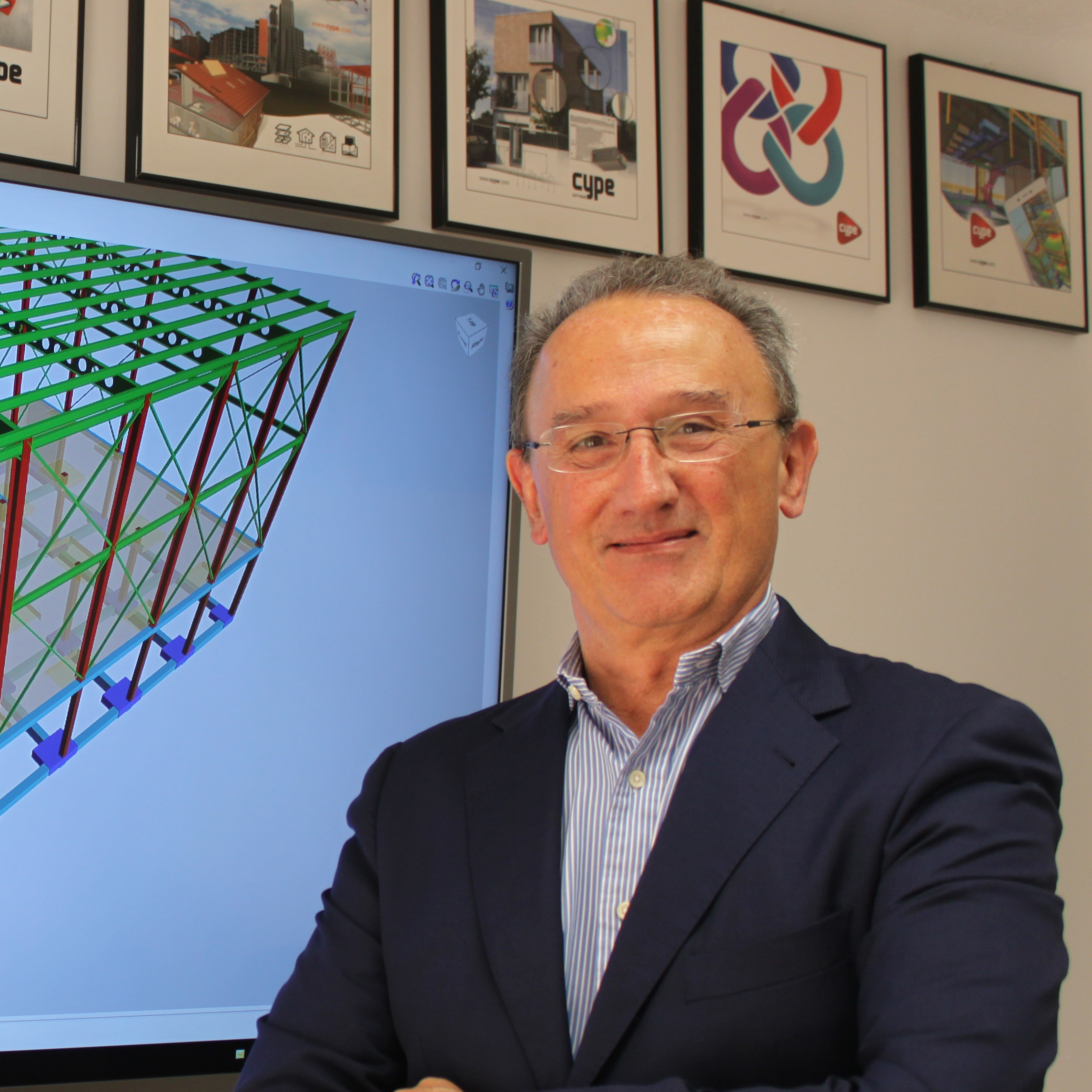What role does R&D&I play in CYPE?
As we are a company that develops technical software for architecture, engineering and construction, innovation is part of CYPE's DNA. We must work with the latest technologies in order to develop the most advanced tools in the structural field, building installations or project and site budget management, among many others, and this is something we have been doing since the company was founded.
How does this effort in innovation translate into figures?
CYPE is accredited as a company with a strong focus on R&D&I, which means that we invest more than 10% of our income or of our staff in this area. In terms of resources, our development department has more than 100 professionals and a large part of them work in innovation. Over the last five years, more than 6 million euros have been invested, which really reflects the importance of R&D&I in CYPE. As a reward for this effort, the Spanish Ministry of Science and Innovation has renewed CYPE's Innovative SME seal for our experience in this area.
What areas is CYPE focusing on and which ones are they adding value to thanks the R&D&I department?
At CYPE we are developing a new generation of products and services with the aim of digitalising the construction industry with ICT solutions. We have two aims: improving our users' competitiveness and promoting more efficient and sustainable construction.
To achieve this, we are researching in areas such as Open BIM technology, advanced engines for structural and installation analysis, and we have also created different augmented reality and virtual reality applications at the same time. All this is being achieved by working with different formats such as developing platforms in the cloud, mobile applications or tools that work on new devices such as smart glasses.
What role does and will BIM technology play in the present and future of the construction industry?
We are currently in the digital age and this is something that will affect every industry. Construction is a critical case because it is in last place, only ahead of agriculture, in terms of digitalisation. BIM has come to solve this need, which is why at CYPE we are committed to this technology as we consider it to be the best solution for making communication easier between all the agents involved throughout the life cycle of a building.
Many manufacturers are betting on BIM technology by digitalising their product catalogues. On that note, the innovative Open BIM Systems service you offer to manufacturers is proving to be a huge success. What do your customers value the most?
Open BIM Systems is a highly innovative solution thanks to which manufacturers can integrate their products in BIM projects through specialised tools where their products are incorporated in detail, based on analysis and geometric criteria, codes and control of interactions with other disciplines. An important aspect of this service is that we work with standard and open formats, meaning that all the information generated is long-lasting and compatible with any other BIM system.
“Over the last five years, more than 6 million euros have been invested, which really reflects the importance of R&D&I in CYPE”
CYPE participates in national and international research projects, which ones are currently active?
We are now collaborating on five research projects. RenoZEB is a European initiative that aims to promote the development of nearly zero-energy building (nZEB) renovation. BIMSpeed is another European project, which is focused on achieving a reduction of up to 30% in the time spent on renovation projects through the use of advanced BIM systems.
We have also just started working on the Circular BIM project, which is focused on the concept of circular economy in the construction industry, and we continue to work on the BIMserver.center initiative, a project from the SME Instrument program, with which we want to promote the use of this BIM project development platform in the cloud on an international level.
Finally, we are working on the Austrian research project BIMSavesEnergy which aims to assess the impact of energy efficiency decisions in the design phase of a construction project. All these projects deal with different topics and pursue different objectives but they have a common link - working with Open BIM technology - that is our main contribution to these research projects.
“We have two aims: improving our users' competitiveness and promoting more efficient and sustainable construction”
What benefits do you gain from participating in these research projects?
It allows us to create new networks and share technical knowledge with companies and entities in the construction industry from all over the world: hardware companies, research centres, universities, etc. All of this gives us access to the industry's reality in the participating partner countries and this is something that favours us in our own software development.
But, above all, participating in international research projects allows us to create strategic alliances with partners that can last beyond the research project. An example of this approach, which is recognised and praised by the European Commission itself as a success story, is the collaboration we have maintained with the French organisation CSTB (Centre Scientifique et Technique du Bâtiment) since participating in the European research project Holisteec (2014), thanks to which we have released a number of energy efficiency and acoustic software applications for the construction industry that are used worldwide.
What are the main technological challenges faced by the construction industry?
During the twelfth, thirteenth and fourteenth centuries, the industry's main challenge focused on developing water infrastructures, such as supply or sanitation facilities, or during the twentieth century, the main challenge was developing transport infrastructures. Nowadays, the challenge is developing information infrastructures. It is becoming increasingly more common in our industry to hear about topics such as artificial intelligence, machine learning, blockchain and big data, technologies based on information processing and which we at CYPE are certain are part of the present, which is why we have already integrated them into the BIMserver.center platform.
“CYPE is researching in areas such as Open BIM technology, 3D printing, augmented reality, virtual reality with different formats such as cloud platforms, mobile applications or smart glasses”
What research and innovation lines will CYPE be working on in the future?
CYPE has launched a series of projects in recent years with a fantastic reception in the market. The idea is to continue working along this line so we have set out three lines of development.
On the one hand, we are implementing new features of BIMserver.center to encourage its use in different areas such as universities or public administration, something that can already be seen in applications such as CYPEURBAN, which, in fact, we are implementing in the 3DEXPERIENCity Virtual Rennes initiative that Rennes Métropole is carrying out to achieve complete digital urban planning.
Likewise, at CYPE we continue to advance and promote the development of Open BIM Systems, which is why we are creating a cloud infrastructure that improves communication between agents and applications. Furthermore, CYPE is working on the continuous improvement of our suite of advanced analysis and code justification tools.





